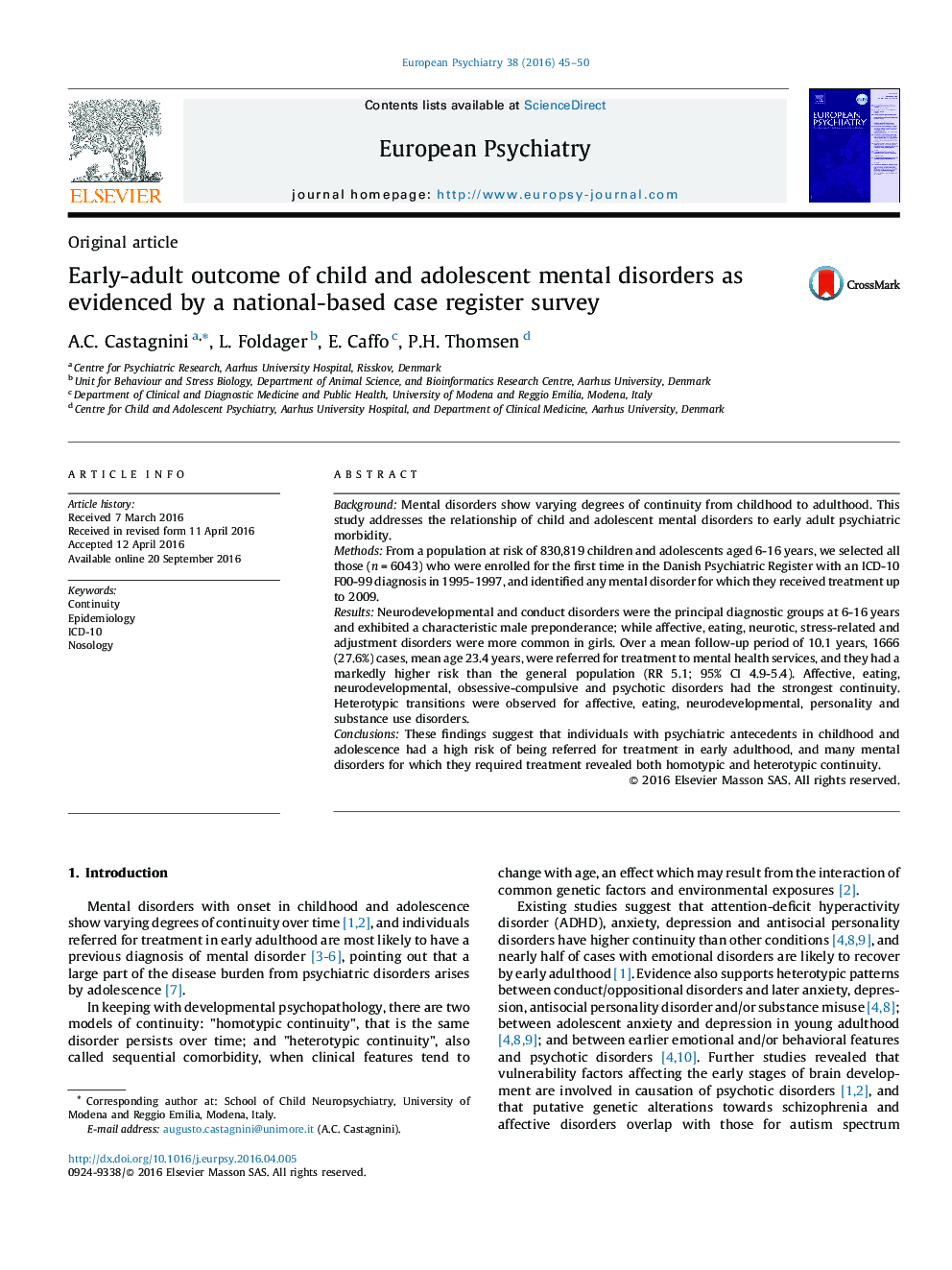| Article ID | Journal | Published Year | Pages | File Type |
|---|---|---|---|---|
| 4183397 | European Psychiatry | 2016 | 6 Pages |
BackgroundMental disorders show varying degrees of continuity from childhood to adulthood. This study addresses the relationship of child and adolescent mental disorders to early adult psychiatric morbidity.MethodsFrom a population at risk of 830,819 children and adolescents aged 6-16 years, we selected all those (n = 6043) who were enrolled for the first time in the Danish Psychiatric Register with an ICD-10 F00-99 diagnosis in 1995-1997, and identified any mental disorder for which they received treatment up to 2009.ResultsNeurodevelopmental and conduct disorders were the principal diagnostic groups at 6-16 years and exhibited a characteristic male preponderance; while affective, eating, neurotic, stress-related and adjustment disorders were more common in girls. Over a mean follow-up period of 10.1 years, 1666 (27.6%) cases, mean age 23.4 years, were referred for treatment to mental health services, and they had a markedly higher risk than the general population (RR 5.1; 95% CI 4.9-5.4). Affective, eating, neurodevelopmental, obsessive-compulsive and psychotic disorders had the strongest continuity. Heterotypic transitions were observed for affective, eating, neurodevelopmental, personality and substance use disorders.ConclusionsThese findings suggest that individuals with psychiatric antecedents in childhood and adolescence had a high risk of being referred for treatment in early adulthood, and many mental disorders for which they required treatment revealed both homotypic and heterotypic continuity.
